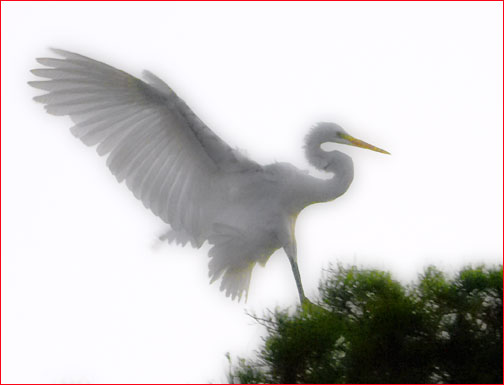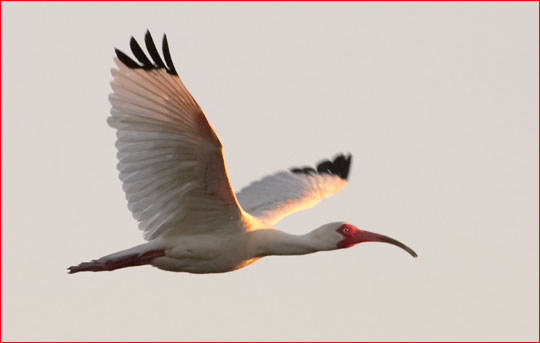Photography is now about computers as much as it is about cameras and lenses. The use of computers brings with it a host of new issues — but the most important issafety. Some of the specific concerns that we all have are…
— backups of both our general working environment as well as of irreplaceable image files
— securing our computers against virus attacks and spam
— ensuring that our other important files and programs are safe against catastrophic failure
I am particularly sensitive to all of these issues because during the past 12 months I have been subject to all of them. The issue foryouis notifany of these will affect you, but ratherwhen. As the saying goes —forewarned is forearmed. Here then are the five areas of computing that you can not take for granted. The ones that can rise up and bite you in the ass. And, here’s what I have done about them.
The products that I have named below are not the only ones on the market. They are not necessarily the best — though I did careful research, and believe that they are (or at least were as if Spring, 2003). Also, these products are applicable to the platform and operating system that I mainly use, a PC runningWindows XP. There are similar (and in some cases the same) products available for the Mac platform.

Heron Landing— Loxahatchee National Wildlife Reserve. April, 2003
Canon 10D with Canon 400mm f/5.6L lens
____________________________________________________
Image File Storage and Backup
Here’s what I now do. I have several Firewire drives attached to my computer. (USB 2.0 drives are fine as well). I also have a DVD-R Firewire drive. When I am finished with aproject(a one day shoot, a single memory card, or whatever) I save all of the scans, digital originals and completed and processed files in a single directory. I then copy that directory to one of my Firewire drives. I thenalsomake a DVD-R copy of that directory and eventually bring it to a safe location outside of my home. (In my case this is my summer cottage in the country).
This means that I have every important file, original RAW files and scans, as well as processed images in two separate places. My local Firewire hard disks make them easy to find and fast to access, and the DVD-R backup at another location protects them from catastrophic lose, such as a fire or flood.
The cost or this approach is moderate. A blank DVD that holds 4.7GB costs $3 or less, about 65 cents per GB of storage. A 120 GB Firewire drive costs about $250, which makes each 1 GB of storage about $2. So, for a little over $2.50 per gigabyte you can have redundant off-site storage of your critical image files as well as instant access to them. I calculate that this ends up costing me an average of 2.5 cents per image, depending on the size of my originals RAW files and the number of final processed images on any given job. Pretty cheap insurance!
____________________________________________________
Virus Protection
No computer user who connect to the Internet and uses e-mail can afford to be without virus protection. It’s a potentially unhealthy cyberworld out there. People with small brains and no social conscious are constantly thinking up new and more virulent ways of wrecking havoc onyourcomputer. I useNorton Antivirus(NAV). This program will scan your incoming and outgoing email and protect you against known viruses. It will automatically download the latest virus definitions from theSymantecweb site and scan your hard disk for potential threats. When it finds them it will quarantine and delete them. Currently I receive an average of 4 warnings a day that viruses were found in my e-mail. I can’t imaging running a computer without NAV or a similar program.
Part of protecting your computer against a hacker attack is having afirewall. This is vital if you have an always-on broadband connection, such as Cable or DSL. If you are using a router this will likely provide the protection that you need, but if not then firewall software is a must.This packagefrom Symantec combines their anti-virus program as well as a firewall. To test the vulnerability of your system, tryShields-UpfromGibson Research, a trusted resource.
____________________________________________________
Spam Protection
The curse of the Internet is SPAM — unrequested and unwelcome e-mail, much of it either pornographic or scams. Because my e-mail address is quite public I receive on average some 100 SPAM e-mails a day! But now that I runiHateSpamI see almost none of them. This program only works onWindowsPCs (except Win95), and only withOutlook2000/2002 or Outlook Express version 5 or higher. But if you fit in this category (and the vast majority of people do), and you are sick and tired of receiving junk e-mail, this istheprogram to get. Buy it and download it online and 20 minutes from now spam will be a thing of the past. The best $20 I’ve ever spent on software.

White Ibis — Loxahatchee National Wildlife Reserve. April, 2003
Canon 10D with Canon 400mm f/5.6L lens
____________________________________________________
System Protection
Every now and then you will install a new program and find that it screws up your system. Something is broken, and you don’t know what it is. Uninstalling the offending program does get rid of it but the damage can’t always be undone. Or, you accidentally delete a file. Really delete it, and have no backup. Wouldn’t it be great if you could turn back the clock and put your computer back to the way it was an hour ago, or a day ago? Well, you can withGoback 3.0. (Note that in mid-April ’03 Symantec purchased Goback from Roxio. Same great product, new publisher).
____________________________________________________
System Backup
Backing up your image files is vital. As discussed above these need to be in two separate places on two different types of media. But what about the rest of your important files — your word processing text files, your e-mails, your calendar and appointments, your accounting and banking data, etc, etc. What do you do to protect these files? What would happen if you had a catastrophic disk failure? Can’t happen? It can! It did to me just a few months ago. The 40GB hard drive on my 18 month old laptop (a Toshiba) started to create a high pitched noise, spun wildly and uncontrollably for 30 seconds and then died. It had crashed, and a professional recovery firm quoted me $2,500 to "attempt" to recover my data, but with no guarantees.
Fortunately most of my data (and none of my image files) were either on other hard drives or another computer. But it was scary, frustrating and potentially very damaging and expensive. There is a simple solution though, and it’s calledRetrospect. This program will automatically backup your files, and in the event of a disaster you can recover everything.
I have the program set to make incremental backups of my main hard disk to another hard drive. It does this every evening, on even days to one backup and on odd days to a second one. It only takes a few minutes because it is only backing up the files that have changed since the day before, not your entire hard disk. Once it’s set up and running you don’t need to think about it, except on the fateful day that you have a hard disk crash or other disaster and turn to it for a fast and simple-to-execute backup.
____________________________________________________
Murphy Was an Optimist
You almost certainly have insurance on your car and home. You likely visit the doctor at least once a year for a preventive check-up. But, are you prepared for the worst when it comes to your valuable data — especially your image files? Now there’s no excuse. You’ve been forewarned.
____________________________________________________
Update:Several readers have pointed out that I neglected to mention the need for an uninterruptible power supply along with surge protection on the power line, cable modem, and phone line. I guess I’ve had one under my desk for so long that I forgot about it. A cable lock on the computer is also a good idea, especially laptops.
You May Also Enjoy...
Film & Formats
In the mid-1960's when I started working professionally as a photographer I used 35mm as often as I could even though most editors preferred —
PT-Links
Canon EOS-D30 Review The March / April 2001 issue ofPhoto Techniquesmagazine contains my review of the Canon EOS D30. Below are links to a variety
